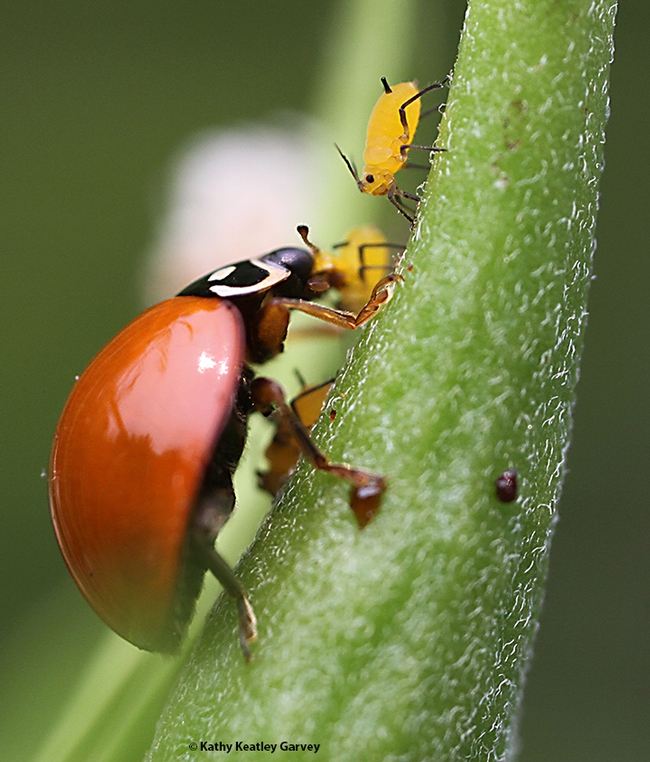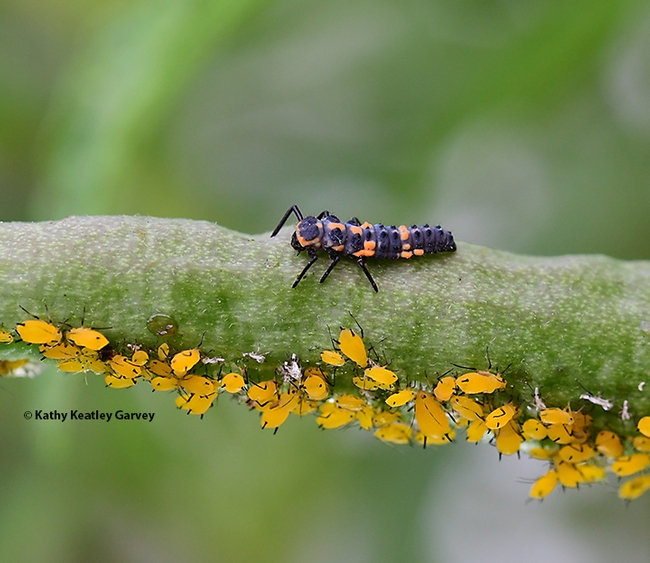Step right up, folks!
I'm a lady beetle, aka ladybug, and it's lunch time.
Or maybe it's snack time, I don't know. I don't talk when my mouth is full.
What I do know is this: aphids are tasty and they line up to be eaten. Or sometimes it appears that way!
Lady beetles, the good guys and gals in the garden, are natural enemies of aphids and other soft-bodied insects. Scientists say a lady beetle may eat as many as 5000 aphids in its lifetime.
The red coloration serves as a warning that “I don't taste good.” When attacked, they ooze a substance that further emphasizes that.
Even the larvae of these beetles eat aphids. Unfortunately, the alligator-like larvae are mistaken for pests and many an novice gardener has killed them.
"They are ferocious predators of small insects," says Lynn Kimsey, director of the Bohart Museum of Entomology and a UC Davis distinguished professor of entomology. In her information sheet on lady beetles, she mentions that "adults will also feed on pollen and nectar when their prey is scarce."
Factoid: "Lady beetles will occasionally bite humans. However, they apparently bite to collect salt rather than to defend themselves or to behave aggressively."
Kimsey includes five species of lady beetles, with photos, on her information sheet:
- Spotless lady beetle, Cycloneda sanguinea
- Asian lady beetle, Harmonia axyridis
- Seven-spot lady beetle, Coccinella septempunctata
- Two-spot lady beetle, Adalia bipunctata
- Convergent lady beetle, Hippodamia convergens
The five are "mostly distinguished by the extent of white markings on the prothorax and the number of black
spots on the wing covers (elytra)," Kimsey says.
All hail the lady beetles!
Attached Images:

